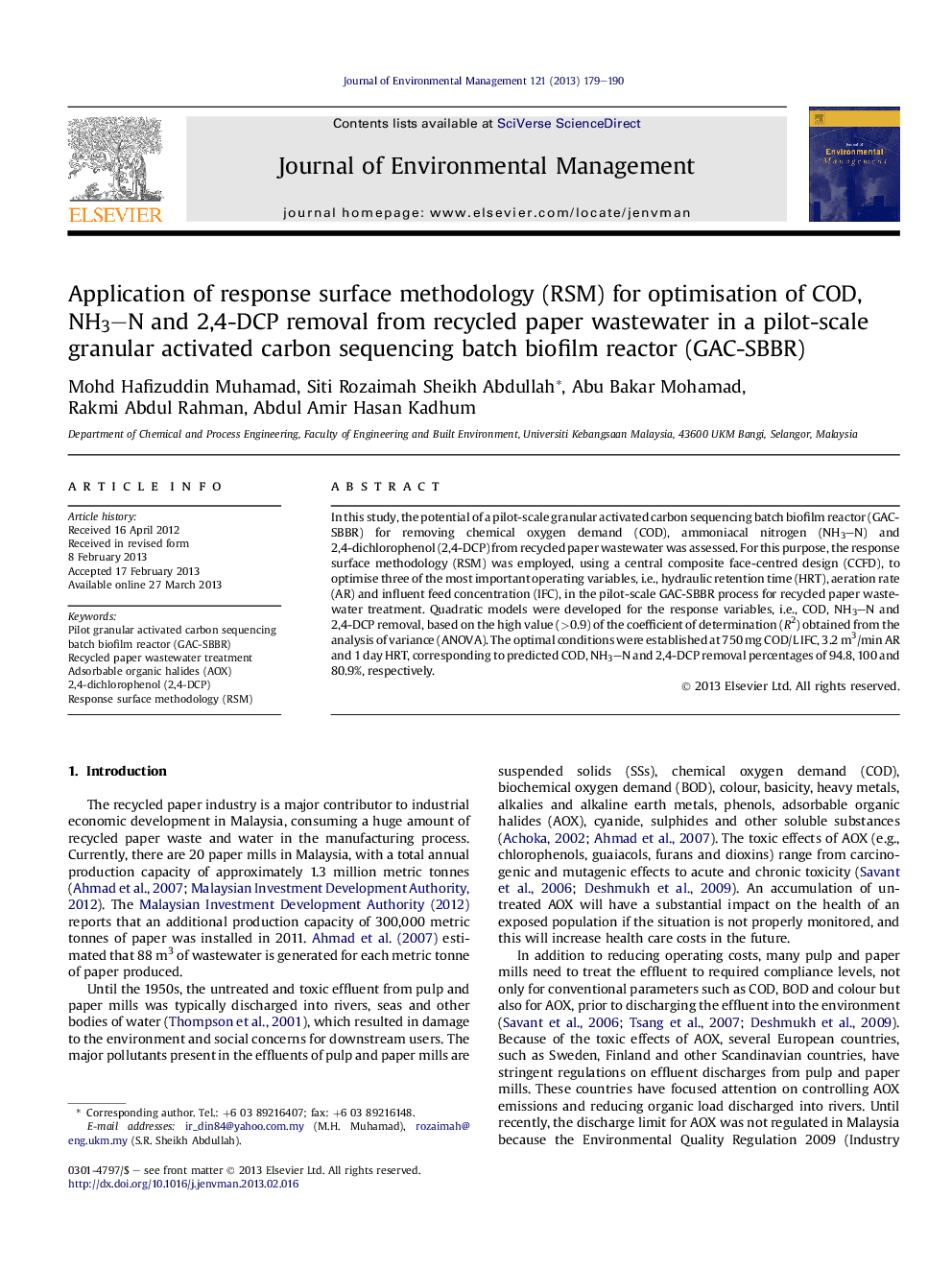| کد مقاله | کد نشریه | سال انتشار | مقاله انگلیسی | نسخه تمام متن |
|---|---|---|---|---|
| 1056368 | 1485291 | 2013 | 12 صفحه PDF | دانلود رایگان |

In this study, the potential of a pilot-scale granular activated carbon sequencing batch biofilm reactor (GAC-SBBR) for removing chemical oxygen demand (COD), ammoniacal nitrogen (NH3–N) and 2,4-dichlorophenol (2,4-DCP) from recycled paper wastewater was assessed. For this purpose, the response surface methodology (RSM) was employed, using a central composite face-centred design (CCFD), to optimise three of the most important operating variables, i.e., hydraulic retention time (HRT), aeration rate (AR) and influent feed concentration (IFC), in the pilot-scale GAC-SBBR process for recycled paper wastewater treatment. Quadratic models were developed for the response variables, i.e., COD, NH3–N and 2,4-DCP removal, based on the high value (>0.9) of the coefficient of determination (R2) obtained from the analysis of variance (ANOVA). The optimal conditions were established at 750 mg COD/L IFC, 3.2 m3/min AR and 1 day HRT, corresponding to predicted COD, NH3–N and 2,4-DCP removal percentages of 94.8, 100 and 80.9%, respectively.
► A pilot-scale GAC-SBBR was setup and operated in a real wastewater treatment plant.
► Optimisation of the pilot plant for recycled paper wastewater treatment was studied.
► RSM using CCFD was used to optimise HRT, AR and IFC.
► Quadratic models have been developed for the response variables.
► The optimum operating conditions were established using RSM.
Journal: Journal of Environmental Management - Volume 121, 30 May 2013, Pages 179–190